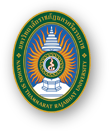Nakhon Si Thammarat
Rajabhat University
Nakhon Si Thammarat
Rajabhat University
Nakhon Si Thammarat
Rajabhat University
Preservation of Thai Arts and Culture
The university actively supports the Preservation and promotion of Thai art and culture through its Cultural Centre, which operates as a dynamic, collaborative entity with the local community, working within its designated authority. The Centre's primary responsibilities include: (1) Studying, investigating, and conducting research pertaining to cultural matters, (2) Conserving, promoting, developing, and disseminating culture, (3) Promoting, revitalizing, and sharing local traditions, (4) Providing training for instructors and personnel in cultural fields. 5. Implementing strategies for the Preservation of local culture. The university establishes policies on arts and culture in accordance with the policies of Nakhon Si Thammarat Rajabhat University Council for the years 2021-2024 to drive the maintenance of arts and culture. The university endeavors to drive the management of information systems for local development and the maintenance of arts and culture to have continuity, systematic, and recency, aiming for effective local development management. Furthermore, the university endeavors to promote, support, and coordinate with governmental agencies and relevant organizations within the province to ensure the monitoring of progress in presenting the Phramahathat as a world heritage site. Additionally, it supports establishing an Intelligent Center for Regional Development, aiming to become a cultural tourism local learning center for the Southern region.
Moreover, per its authority, the university establishes directions for promoting local and national arts and culture, outlining operational guidelines across five aspects (1) In terms of study, investigate, and conduct research in the field of culture. (2)In terms of conservation, promotion, development, and dissemination of culture. (3) In terms of promoting, revitalizing, and disseminating local cultural traditions. (4) In the aspect of training cultural instructors and personnel. (5) In terms of implementing the Preservation of local culture by collaborating with the local community and external network associations engaged in arts and cultural endeavors, such as the Ministry of Culture and the Cultural Office of Nakhon Si Thammarat Province Office of Buddhism, Nakhon Si Thammarat Province, the Arts and Culture Council of the Rajabhat University of Thailand, and other supporting agencies for cultural and arts activities include.
1. In terms of study, investigate and conduct research in the field of culture.
The university is committed to investigating and conducting research in the field of culture. To facilitate these aims, it develops undergraduate curricula that promote education and scholarly inquiry into cultural subjects within local communities. Notable programs include the Bachelor of Arts in Cultural Management in the Creative Economy, among others.
2. In terms of conservation, promotion, development, and dissemination of culture.
The university has been designated by a committee to nominate Wat Phra Mahathat Woramahawihan in Nakhon Si Thammarat Province (colloquially known as Phra Mahathat Temple of Nakhon Si Thammarat) for inclusion on the World Heritage List. This appointment took effect on July 13, 2012. The university also fulfills a pivotal role as the executive committee within the framework of the Academic and Translation Document Committee. Its primary responsibility involves conducting in-depth research into the historical significance of the sacred Phra Mahathat Chedi, a major cultural heritage site in Nakhon Si Thammarat Province. This research is pivotal in supporting the nomination process and highlighting the site’s global cultural and historical value. Academic documents are produced to conserve, promote, and disseminate information about Wat Phra Mahathat Woramahawihan, Nakhon Si Thammarat, a cultural heritage leading to world heritage status. The university serves as a key collaborating entity with cultural network organizations in missions related to this endeavor, both through task forces or committees and by conducting research in arts and culture; this information is crucial for curriculum development and educational management, as well as for the enhancement of the arts and culture database system, including various aspects such as southern folk songs, Classical Thai tune (Manohra), Shadow play, ceremonial foods, childbirth customs, and more.
3. In terms of promoting, revitalizing, and disseminating local cultural traditions.
The university acknowledges the significance of promoting, revitalizing, and disseminating the local traditions inherent to Nakhon Si Thammarat Province. We are committed to consistently participating in activities that resonate with the province's unique customs. One notable tradition is the merit-making ceremony of offering fire, a ritual indigenous to the region, which is conducted in collaboration with the local community. Furthermore, the university extends its engagement by preparing hot meals for offerings during the ceremony, thus contributing to the act of making merit. Additionally, the university endeavors to nurture a conscious mindset among its staff, students, and the community, particularly through encouraging active participation in Magha Puja Day activities. The university organizes an activity Paa Phra Bot where participants write sacred cloth flags depicting Buddhist stories. Subsequently, these cloth flags are incorporated into a procession to wrap around the sacred Phra Mahathat Chedi, alongside other participating organizations. The flags used in the procession are long strips of fabric in yellow, red, and white colors arranged in a long procession. This tradition is observed annually during the Magha Puja period. In addition, the university organizes the Khao Matupayas ceremony, during which auspicious items are distributed among participants, promoting a sense of good fortune and community sharing. Furthermore, the institution plays a vital role in orchestrating the Bunsart Festival during the tenth lunar month, an event that features the decoration of cars for the Buddhist Lent procession and includes competitions in youth poetry recitation and nang talung, a traditional shadow play.
Religious observances also form a key part of our calendar, reflecting the diversity of faiths within our community, including celebrations such as Eid al-Fitr for our Muslim members, among other significant religious events.
Moreover, as a committed advocate for the arts and culture, the university actively promotes these valuable sectors by forming partnerships with various respected organizations, both domestically and internationally. These collaborations are formalized through Memorandums of Understanding (MOU), which encompass a range of activities. Noteworthy among these is the hosting of the International Film Festival at Wat Khanon in Ratchaburi Province, an event that highlights the university's dedication to cultural enrichment and global connectivity.
4. In the aspect of training cultural instructors and personnel.
The university provides specialized training sessions aimed at safeguarding and enhancing traditional arts, covering areas such as shadow play, Thai Southern Folk Song (Pleng Bok), and classical Thai tune (Manohra), while also offering professional development opportunities specifically tailored for budding junior tour guides who are concentrating on cultural tourism; furthermore, the curriculum includes instruction in proper etiquette and essential principles required for organizing religious ceremonies and other cultural practices, with this extensive strategy guaranteeing the continuation and admiration of our invaluable cultural heritage.
5. In terms of implementing the preservation of local culture.
The university has established a unit for environmental and cultural heritage conservation and has been assigned by the Ministry of Natural Resources and Environment to play a key role in surveying data on the arts and cultural aspects of archaeological sites. This is aimed at compiling databases and disseminating information to relevant agencies responsible for preserving and conserving local culture. Examples of surveyed sites include the Chao tuad wat pak chian Shrine (Chian Yai District), Ai-Kai Chedi Temple (Ai Kai: Sichon District), Wat That Noi (Pho Than Khrai Chang Klang District), and Somdet Kromluang Chumphon Shrine Pak nam Sichon (Sichon District).
Nakhon Si Thammarat Province, 80280, Thailand [.main.description] Nakhon Si Thammarat Rajabhat University 075-392040 https://www.nstru.ac.th/







